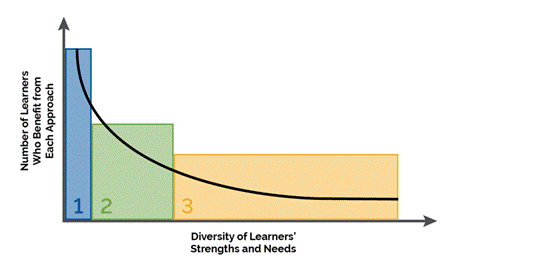Artificial Intelligence in Education: Challenges and Opportunities for Sustainable Development
|
Teaching (Today for) Tomorrow: Bridging the Gap between the Classroom and Reality 3rd International Scientific and Art Conference |
|
Imelda Zadeja, Jozef BushatiUniversity of Shkodra "Luigj Gurakuqi", Albania imelda.zadeja@gmail.com |
|
| Section - Education for sustainable development | Paper number: 34 |
Category: Scientific review |
Abstract |
|
Artificial Intelligence is rapidly transforming the landscape of education, presenting both challenges and unprecedented opportunities for sustainable development. This study investigates the multifaceted impact of AI on educational practices, focusing on administration, instruction, and learning process. A qualitative research approach was employed, utilizing a literature review framework to explore AI's application and effects in education. AI embodies a range of innovations characterized by human-like cognitive abilities, learning processes, adaptability, and decision-making capabilities. As AI integrates into educational systems, it blurs the lines between traditional roles and tasks, leading to a reshaping of professions and instructional methods. Some professions may become obsolete, while others undergo substantial transformations requiring updated didactic materials. Concurrently, new vocations will emerge necessitating innovative educational approaches. In educational operations, AI serves as both a reformer and facilitator, reshaping job roles and work dynamics. This study underscores the need for educators and policymakers to proactively address the implications of AI, ensuring equitable access to technological advancements and harnessing AI's potential to enhance educational outcomes. By embracing AI responsibly, the education sector can leverage emerging technologies for sustainable development and improved learning experiences. This research contributes to the ongoing discourse on AI in education, highlighting critical challenges and transformative opportunities for the future. |
|
Key words: |
|
artificial intelligence; responsible AI; transformative education; emerging technologies; educational outcomes. |
Introduction
Artificial Intelligence is no longer a futuristic concept but a present-day reality that is reshaping numerous sectors, including education. Over the past decade, AI has rapidly evolved, moving beyond theoretical frameworks to practical applications that are transforming how people teach, learn, and engage with educational systems (Chen, 2022). As the world faces increasing challenges related to globalization, technological advances, and sustainability, the integration of AI in education offers both promising solutions and new dilemmas (Roll, 2016). AI is seen as a game-changer that could revolutionize education by enhancing accessibility, improving educational outcomes, and optimizing the administrative tasks within institutions. However, this transformation is accompanied by questions concerning equity, ethics, and the readiness of educational systems to adapt to these innovations.
The field of education is undergoing a significant transformation driven by the development of AI technologies. From automated grading and personalized learning systems to AI-driven chatbots and virtual tutors, these tools are enhancing traditional methods and offering personalized learning experiences (Kamalov, 2023). AI is designed to mimic human cognitive functions such as learning, reasoning, and problem-solving, enabling it to tailor content to individual learners' needs and preferences. This adaptability presents an opportunity for more customized, efficient, and engaging learning environments that could benefit students of diverse backgrounds and capabilities (Lameras, 2022).
However, the promise of AI in education is not without its challenges. While AI-powered tools may support individualized learning, there is concern over their potential to widen the educational divide, particularly in regions or populations with limited access to technology. Moreover, AI integration necessitates changes in the roles of educators and administrators, requiring new skills, pedagogical strategies, and ongoing professional development. The increased reliance on AI also raises important questions about data privacy, algorithmic bias, and the ethical implications of AI’s decision-making processes.
Sustainability in education is increasingly tied to technological advancements, particularly in the context of the United Nations Sustainable Development Goals (SDGs), specifically Goal 4, which emphasizes the need for inclusive, equitable, and quality education (Nations, 2022). AI has the potential to contribute significantly to this goal by providing innovative solutions to longstanding challenges such as accessibility, teacher shortages, and educational inequality (Abulibdeh, 2024). However, achieving sustainable development through AI in education requires careful consideration of not just the technological and economic benefits, but also the social, cultural, and ethical impacts (Nguyen, 2023).
This paper explores the intersection of AI, education, and sustainable development by examining how AI can both reshape educational practices and contribute to long-term societal development. The study investigates the dual nature of AI’s impact, focusing on its role as a reformer and facilitator in educational systems. It also assesses the risks and opportunities artificial intelligence presents to educators, policymakers, and students alike. By integrating theoretical insights with empirical data from official sources, this study provides a comprehensive look at the transformative potential of AI in education and its implications for a more sustainable and equitable future.
Through this investigation, we aim to offer practical recommendations for the integration of AI technologies that will ensure the realization of AI’s benefits without exacerbating existing inequalities. Furthermore, the paper advocates for a collaborative approach involving governments, educators, technology developers, and communities to foster a future where AI in education can contribute to a more inclusive, adaptive, and sustainable educational environment for all.
Methodology
This study utilizes a qualitative research methodology, particularly a systematic literature review, to explore the current state of AI in education. Several reputable sources, including peer-reviewed articles, reports from educational organizations, and official data from government and institutional bodies, were reviewed. This approach allows for an in-depth exploration of AI’s applications and its effects on educational practices, focusing on sustainability and long-term development.
For the data analytics section, we reference various statistics and reports on AI adoption in education and its impact on sustainable development. Below are key data points and cross-references from official sources:
AI Adoption in Education:
- UNESCO (2023) - A report by UNESCO on AI in education highlighted how AI is being used to enhance accessibility to education, improve teacher training, and provide personalized learning experiences to students. It estimates that AI-powered tools could improve student outcomes by 15–20% (UNESCO, 2023).
- OECD (2022) - The OECD’s annual report on digitalization in education emphasized AI’s role in bridging the learning gap by offering customized learning experiences and reducing educational inequality. The organization also noted that AI could automate administrative tasks, allowing teachers more time for pedagogical activities (OECD, 2022).
- World Economic Forum (2021) - AI and its impact on education were analyzed, particularly focusing on how it can influence job creation and skills development. AI-driven learning tools are projected to enhance lifelong learning, allowing people to upskill and reskill throughout their lives, addressing the skills gap in a rapidly changing job market (Forum, 2021).
Influence on Sustainable Development:
- Sustainable Development Goals (SDGs): AI in education supports several SDGs, particularly Goal 4: Quality Education. AI has the potential to make education more inclusive, equitable, and accessible, especially in remote or underserved areas (Nations, 2022).
- Data Analytics on Sustainable Learning: AI systems help track student progress, identify learning gaps, and recommend personalized learning paths, which can significantly improve educational outcomes. According to a study by McKinsey (2023), AI-enabled personalized learning platforms showed a 30% improvement in student performance metrics (Company, 2023).
At the forefront of AI research and development (R&D) in education, innovators are focused on creating models that align with the diverse data available. As technology scales and becomes increasingly prevalent, data is being drawn from a wide variety of contexts, reflecting the unique ways individuals engage in teaching and learning within those environments. Researchers from our listening sessions highlighted AI's potential to address the issue of "context," particularly in relation to the vast spectrum of learner variability often referred to as the long tail.
As illustrated in Figure 1, learners differ significantly in their strengths and needs. The leftmost part of the figure represents the most common combinations of strengths and needs—often addressed through a generalized approach, sometimes called "teaching to the middle." Less frequent combinations extend toward the right, representing learners with unique or specialized requirements. The upward axis reflects the number of learners who benefit from a given instructional design, pathway, or method. We propose that AI has the capacity to accommodate a broader range of learner strengths and needs but only if developers and innovators prioritize addressing the long tail rather than focusing solely on generalized approaches.
Figure 1: The long tail of learner variability (U.S. Department of Education, 2023)

AI technologies are fundamentally built on models, and these models are inherently imperfect. It falls upon humans to define educational goals and evaluate the extent to which these models align with and support those objectives—or conversely, where they fail and might even cause harm. While assessing how well certain AI tools address educational priorities may seem straightforward, the allure of technology can sometimes shift focus to a “let’s see what the tech can do” mindset (U.S. Department of Education, 2023). This approach risks sidelining clear educational goals and could lead to the adoption of models that poorly serve these priorities.
The urge educational policymakers and decision-makers at the local, state, and federal levels to use their influence to align priorities, strategies, and technology adoption with the primary goal of meeting students’ educational needs—above the excitement surrounding emerging AI capabilities. It is critical to strengthen adherence to existing policies at state, district, and school levels that govern educational technology adoption and use. These include frameworks such as the four levels of evidence outlined in the Every Student Succeeds Act (ESSA), privacy protections under the Family Educational Rights and Privacy Act (FERPA), and any future enhanced policies. Local education leaders, who are best positioned to understand urgent educational needs, must lead conversations about AI and other emerging technologies by centering student priorities. These discussions should begin and end with the educational needs of students as the focus, with an emphasis on evaluating effectiveness based on those priorities (U.S. Department of Education, 2023).
This research aims to provides detailed guidance on evaluating AI technologies for their effectiveness in achieving intended educational objectives. To assist decision-makers, summarize key insights regarding the characteristics of AI models and their application in educational tools and systems in Figure 2 (U.S. Department of Education, 2023). These insights aim to empower leaders to critically assess AI solutions, ensuring that technology adoption serves the best interests of students, maintains equity, and aligns with broader educational priorities.
Figure 2: Recommendation for desired qualities of AI tools and systems in education (U.S. Department of Education, 2023)

The study employs a qualitative research approach through a systematic literature review, analyzing peer-reviewed journals, official reports, and policy briefs from 2018-2023. Data from organizations like UNESCO and OECD highlights AI's impact on education and its alignment with SDG 4. The analysis focuses on AI as an educational innovator, its role in equity and sustainability, and associated challenges. Findings are validated through triangulation and cross-referencing, ensuring credibility while emphasizing ethical considerations and alignment with student needs.
Results
The integration of AI in education has demonstrated positive effects in various areas, though challenges remain. The following key results were identified from the data analysis and literature:
1. Improved Educational Accessibility and Inclusivity
AI-powered systems, such as personalized learning platforms, are making education more inclusive. AI tools can adapt to students’ needs, allowing for differentiation in content delivery. For example, AI-driven platforms can provide real-time translations, assist students with disabilities, and help non-native speakers.
2. Enhanced Administrative Efficiency
AI in education helps automate repetitive administrative tasks, including grading, attendance tracking, and curriculum management. This allows educators to focus more on teaching and interaction with students. Additionally, AI’s role in resource allocation has led to cost reductions in many institutions.
3. Creation of New Vocations and Reskilling Opportunities
AI also presents an opportunity to create new educational paths in fields related to technology, data science, and AI itself. As the job market evolves, AI helps design curricula that are better aligned with industry needs, fostering a culture of lifelong learning and reskilling.
Conclusions
The implementation of AI in education provides both challenges and opportunities for sustainable development. On one hand, AI is a powerful tool that can enhance educational quality, provide equitable access, and foster personalized learning experiences. On the other hand, there are challenges related to the digital divide, privacy concerns, and the need for teacher training to integrate AI effectively into classrooms.
AI-driven educational technologies offer great promise in reshaping the way education is delivered and experienced, with the potential for transformative impacts on learning outcomes and societal development. However, the successful integration of AI in education requires a balanced approach that addresses ethical considerations, ensures data privacy, and promotes teacher professional development.
Recommendations
Based on the findings of this study, the following recommendations are made for educators, policymakers, and technology developers:
- Invest in Teacher Training: Educators need continuous professional development to understand AI tools and integrate them effectively into their teaching practices.
- Foster Collaboration Between Governments and Tech Companies: To ensure equitable access to AI technologies, partnerships between educational institutions, governments, and private companies should be established.
- Address Data Privacy and Ethical Concerns: Strong policies and frameworks should be developed to protect student data privacy while ensuring that AI systems are transparent and accountable.
- Promote Lifelong Learning and Reskilling Programs: Governments and institutions should focus on creating programs that allow adults to upskill and reskill to remain competitive in the evolving job market.
- Focus on Inclusive AI: AI tools must be developed to cater to diverse student populations, ensuring that all learners benefit equally from technological advancements.
References
Articles published in journals:
Abulibdeh, A. Z. (2024). Navigating the confluence of artificial intelligence and education for sustainable development in the era of industry 4.0: Challenges, opportunities, and ethical dimensions. Journal of Cleaner Production.
Chen, X. Z. (2022). Two Decades of Artificial Intelligence in Education: Contributors, Collaborations, Research Topics, Challenges, and Future Directions. Educational Technology & Society (pp. 28–47). JSTOR.
Lameras, P. &. (2022). Power to the Teachers: An Exploratory Review on Artificial Intelligence in Education. Information. (Artificial Intelligence and Games Science in Education). doi:https://doi.org/10.3390/info13010014
Nguyen, A. N. (2023). Ethical principles for artificial intelligence in education. Educ Inf Technol 28, 4221–4241. doi:https://doi.org/10.1007/s10639-022-11316-w
Roll, I. W. (2016). Evolution and Revolution in Artificial Intelligence in Education. Int J Artif Intell Educ, 582–599. doi:https://doi.org/10.1007/s40593-016-0110-3
Reports:
U.S. Department of Education, O. o. (2023). Artificial Intelligence and Future of Teaching and Learning: Insights and Recommendations. Washington, DC.
Conference Proceedings:
Kamalov, F. S. (2023). New Era of Artificial Intelligence in Education: Towards a Sustainable Multifaceted Revolution. Sustainability, 15(16).
Electronic sources:
Nations, U. (2025). United Nations Sustainable Development Goals . Retrieved from https://sdgs.un.org/goals
UNESCO. (2023). AI in Education: Transforming Education with Artificial Intelligence. Retrieved from https://www.unesco.org
OECD. (2022). The Future of Education and Skills: AI’s Role in Education. . Retrieved from https://www.oecd.org
Company, M. &. (2023). The Impact of AI on Educational Performance. Retrieved from https://www.mckinsey.com
Forum, W. E. (2021). AI and the Future of Work in Education. Retrieved from https://www.weforum.org

